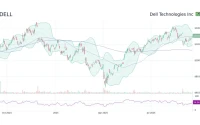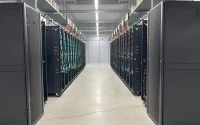Let's be honest with each other. For years, the grand vision of a seamless digital future—the metaverse, interconnected gaming worlds, truly decentralized social networks—has felt like a beautiful promise stuck in first gear. We've been trying to build superhighways on top of dirt roads. The bottleneck has always been speed and scale. Our current blockchains, even the fastest ones, are like trying to pour an ocean through a garden hose. They can handle a few thousand, maybe tens ofthousands, of transactions per second. It’s impressive, but it’s not the revolution we were sold.
This is why, when a project comes along claiming to have shattered that barrier, you have to sit up and pay attention. I’m talking about Somnia (SOMI), a Layer 1 blockchain that isn’t just promising an incremental improvement. It’s proposing a fundamental re-architecture of what’s possible. The team is talking about processing over one million transactions per second with sub-second finality. When I first read that claim in their technical documents, I honestly had to get up from my desk and walk around the room. This isn't just a bigger garden hose; it's a complete reimagining of the plumbing.
The current price of SOMI hovering around a dollar on CoinMarketCap is almost a distraction. Yes, the trading volume is healthy, and its market cap is growing, but to focus on the daily charts is to miss the forest for the trees. The real story isn't the token; it's the engine. It’s the answer to a question that has plagued developers for a decade: how do we build a digital world that can support millions of us, all at once, without collapsing under the strain?
A New Digital Physics
So, how do they even begin to approach a number like one million transactions per second (TPS)? The answer lies in a complete departure from traditional blockchain design. Think of most blockchains as a single-lane highway. Every car (transaction) has to follow the one in front of it, leading to massive traffic jams during peak hours. It’s why you see network fees skyrocket and confirmation times crawl.
Somnia’s "MultiStream architecture" is something else entirely. It's like building a 100-lane superhighway where every lane is also an express lane. It processes transactions in parallel, not in a single file line. They combine this with something called compiled EVM bytecode execution—in simpler terms, it’s like translating a complex instruction manual into a universal, easy-to-read language before anyone needs to use it, making the entire process of running applications on the chain unbelievably efficient. It’s a one-two punch of parallel processing and hyper-optimization that, on paper, completely changes the rules of the game.

This is the kind of breakthrough that reminds me why I got into this field in the first place. It’s not just about faster crypto payments. It's about creating a digital environment with a different set of physical laws. What happens when the friction of interaction disappears? What new forms of art, gaming, and social connection become possible when the digital world is as responsive and immediate as the real one? These aren't just technical questions; they're questions about the future of human experience.
From Bottleneck to Blank Canvas
For too long, our creativity has been constrained by our technology. Game developers have had to make compromises. Metaverse architects have had to build small, instanced worlds instead of vast, persistent universes. We’ve been dreaming in 8K but building in 480p. A platform that can genuinely handle a million TPS changes the equation entirely. The bottleneck becomes a blank canvas.
Imagine a single, persistent MMORPG world, bigger than any we’ve ever seen, with millions of players interacting in real-time without a single moment of lag or a loading screen—your every action, every item crafted, every piece of land claimed is recorded instantly and immutably on-chain, creating a digital reality as seamless and responsive as our own. Think of social networks where your identity and data are truly yours, not siloed on a corporate server, and where you can build and own a piece of the platform itself.
This leap feels analogous to the invention of the printing press. Before Gutenberg, information was chained to the desks of scribes, slow to create and difficult to distribute. The press didn't just make copying books faster; it democratized knowledge and enabled the Renaissance and the Enlightenment. It unleashed new ways of thinking we couldn't have conceived of before. A truly scalable blockchain could do the same for digital value and interaction. But with this kind of world-building power comes immense responsibility. We must ask ourselves: as we architect these new realities, are we building them to be open, equitable, and empowering? Or are we just recreating the walled gardens of the old internet with a new set of tools? The code we write today will become the social contract of tomorrow.
The current financial metrics—the Somnia price today, SOMI to USD live price, marketcap and chart - CoinMarketCap, the daily price fluctuations you might see on Coinbase or by checking the gold price—are just echoes of this deeper potential. They are the market's early, fumbling attempt to price in a paradigm shift. The real test for Somnia won't be on the trading charts. It will be in the hands of the builders, the dreamers, and the creators who will take this raw power and forge the next generation of the internet. The question is no longer "if" we can build these worlds, but "what" worlds we choose to build.
The Dawn of Instant Reality
This is more than just another fast blockchain. This is about latency. Not the technical kind, but the human kind—the gap between an idea and its execution, between an interaction and its consequence. Somnia, and projects like it, are on a mission to erase that latency. They're trying to build a foundational layer for a world where digital experiences aren't a clunky, delayed reflection of reality, but a seamless, instantaneous extension of it. If they succeed, it won't just change gaming or finance. It will change the very texture of our daily lives. We are standing at the edge of a profound shift, looking at the blueprint for a future that is arriving far faster than any of us expected.









